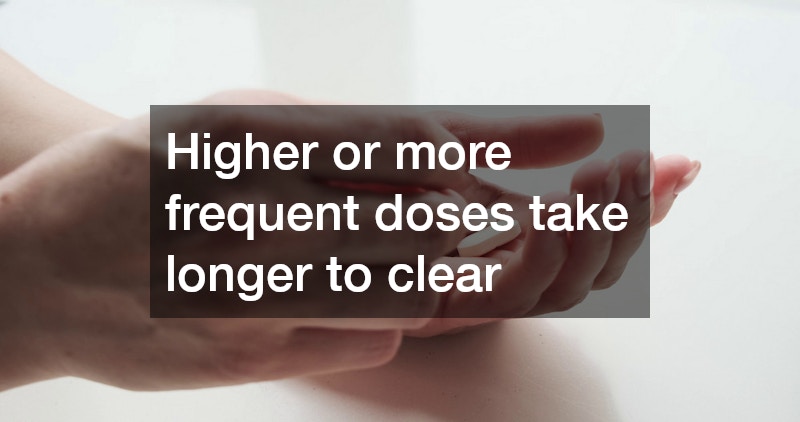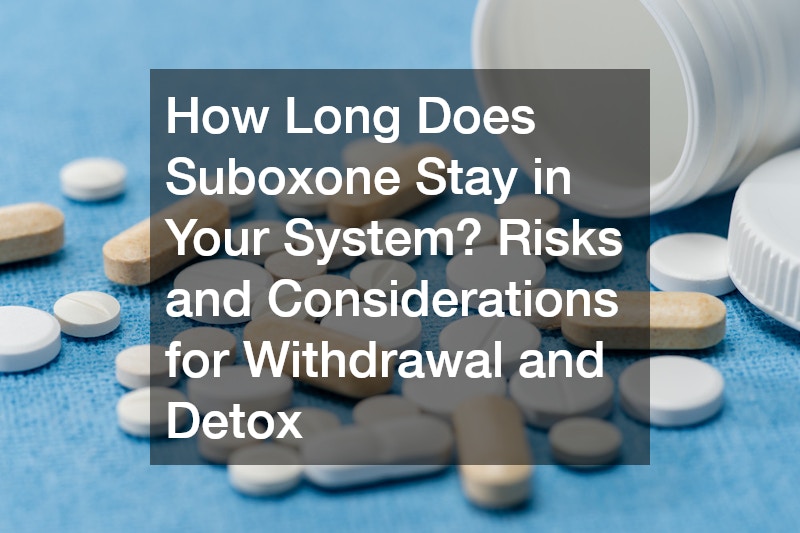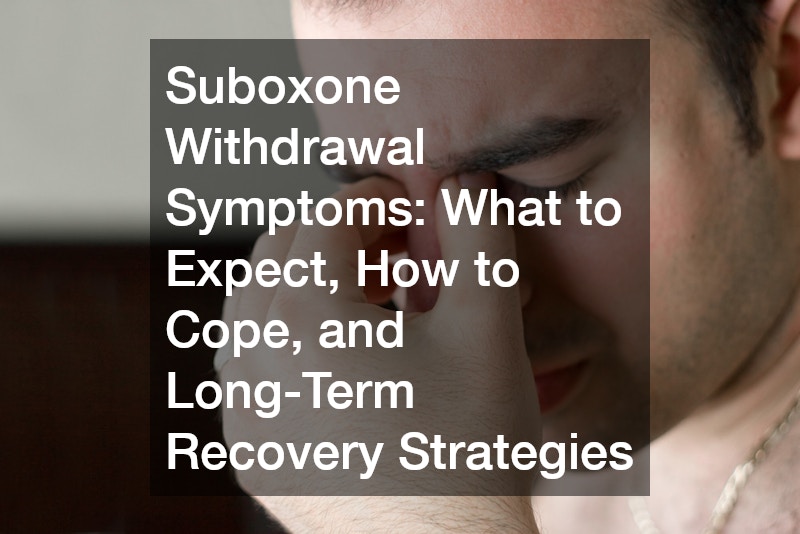Suboxone has become a widely used treatment for opioid dependence. It contains buprenorphine, a partial opioid agonist, and naloxone, an opioid antagonist. While it helps manage cravings and withdrawal symptoms, many people wonder: how long does Suboxone stay in your system? Understanding this is essential for planning detox, avoiding complications, and safely navigating withdrawal.
In this article, we’ll cover everything from detection timelines to risks, withdrawal symptoms, and practical considerations during detox.
How Does Suboxone Work in Your Body?
Before diving into detection times, it’s helpful to understand how Suboxone affects your body:
- Buprenorphine binds to opioid receptors in the brain, reducing cravings and withdrawal symptoms without producing a full opioid “high.”
- Naloxone is included to prevent misuse. When taken as prescribed (sublingually), naloxone has minimal effect. However, if injected, it can trigger withdrawal.
- Suboxone has a long half-life, typically 24–42 hours, which helps smooth out withdrawal but also affects how long it remains detectable in your system.
Because of these properties, the medication can stay in your body for several days to weeks, depending on factors like dosage, metabolism, and liver function.
How Long Does Suboxone Stay in Your System?

The answer isn’t one-size-fits-all. Several variables influence how long Suboxone stays detectable:
Factors Affecting Detection Time
- Dosage – Higher or more frequent doses take longer to clear.
- Duration of Use – Long-term use can result in accumulation, extending detection times.
- Metabolism – Fast metabolizers process drugs quicker, while slower metabolism prolongs detection.
- Body Fat and Weight – Buprenorphine is lipophilic, meaning it can accumulate in fat tissue.
- Liver Health – Liver function directly impacts how efficiently Suboxone is metabolized.
Approximate Detection Times
Detection varies depending on the type of test used:
- Urine test: 3–7 days (long-term use can extend up to 14 days)
- Blood test: 24–48 hours
- Saliva test: 1–4 days
- Hair test: Up to 90 days
Keep in mind, these are approximate ranges. Individual differences make exact predictions challenging.
What Are the Risks During Suboxone Detox?

Detoxing from Suboxone can be safer than detoxing from full opioids, but it still comes with risks. Understanding these helps you prepare for the process.
Common Withdrawal Symptoms
Even though Suboxone eases withdrawal, stopping it suddenly can lead to uncomfortable symptoms:
- Anxiety or irritability
- Muscle aches and joint pain
- Insomnia or sleep disturbances
- Nausea, vomiting, or diarrhea
- Sweating and chills
- Cravings for opioids
These Suboxone withdrawal symptoms can vary in intensity based on how long you’ve been taking the medication and your overall health.
Potential Medical Risks
- Relapse Risk – Incomplete detox may increase cravings and relapse potential.
- Mood Disorders – Anxiety and depression can emerge during detox.
- Physical Complications – Dehydration from vomiting or diarrhea can strain the body, especially for those with underlying health issues.
How to Minimize Risks During Detox
Detox doesn’t have to be unsafe. Here are some practical steps:
Medical Supervision
Always consider consulting a healthcare professional before tapering off Suboxone. Medical supervision can provide:
- Tapering Schedules – Gradually reducing doses minimizes withdrawal severity.
- Monitoring – Ensures your heart rate, blood pressure, and mental health remain stable.
- Medications – Adjunct medications can help manage symptoms like insomnia, nausea, or anxiety.
Lifestyle Support
- Hydration – Drinking water and electrolytes helps combat dehydration.
- Nutrition – Eating balanced meals supports energy and recovery.
- Sleep Hygiene – Adequate rest helps your body repair itself during detox.
- Exercise – Light physical activity may ease muscle aches and improve mood.
Emotional and Peer Support
Detox is as much mental as it is physical. Support can include:
- Counseling or Therapy – Cognitive-behavioral therapy (CBT) can help manage cravings.
- Support Groups – Peer groups like NA (Narcotics Anonymous) provide encouragement and accountability.
- Family or Friends – Trusted individuals can help track progress and provide emotional support.
How Long Will Withdrawal Last After Stopping Suboxone?
The timeline for withdrawal depends on dosage, duration of use, and individual physiology. Here’s a general overview:
- 0–72 Hours: Early withdrawal may include anxiety, mild aches, and irritability.
- 3–7 Days: Peak withdrawal symptoms like nausea, diarrhea, and strong cravings often occur.
- 1–2 Weeks: Symptoms gradually lessen, though mood swings and sleep disturbances may persist.
- 2+ Weeks: Some lingering effects, such as fatigue or mood sensitivity, may continue.
Tapering slowly under medical supervision can shorten and soften this timeline.
Common Questions About Suboxone Detox
Can I Detox at Home Safely?
It is possible for some individuals to taper at home, but medical supervision is strongly recommended, especially for long-term users or those with other health conditions.
Will Detox Trigger Relapse?
Sudden withdrawal can increase the risk of relapse. A structured taper, therapy, and peer support greatly reduce this risk.
Can Suboxone Stay in My System Longer Than Expected?
Yes. People with slower metabolism, higher body fat, or liver issues may retain Suboxone longer than average. This is why testing and medical guidance are important.
When to Seek Professional Help
Seek professional help if you experience:
- Severe or worsening withdrawal symptoms
- Intense cravings that could lead to relapse
- Signs of dehydration or malnutrition
- Emotional instability or thoughts of self-harm
Suboxone detox is safer and more manageable with professional oversight.
In Closing
Suboxone can be a powerful tool in overcoming opioid dependence, but understanding how long Suboxone stays in your system is essential for safe detox planning. The timeline varies from person to person, influenced by factors like dosage, metabolism, and overall health.
While withdrawal is rarely life-threatening, it can be uncomfortable and emotionally challenging, making medical guidance and a strong support system invaluable. By tapering slowly, caring for your body, and addressing your mental well-being, you can reduce risks, improve comfort, and set yourself up for lasting recovery.


